Whether you’re a seasoned angler or a total newbie to the world of fishing, there’s something undeniably magical about spending a day by the water, rod in hand. It’s not always about catching the biggest fish; it’s about soaking in the great outdoors, listening to the soothing rhythm of the water, and witnessing nature at its finest. But if you’re eager to hook some nibbles on your next fishing excursion, here’s a beginner’s guide to get you started.
The Basics of Fishing
So, you’re itching to embark on a fishing journey. One of the quickest ways to learn the ropes is by tagging with your buddies who are already hooked on angling. These folks are a goldmine of practical insights that can fast-track your fishing adventure.
However, keep in mind that your fishing buddies have their niches. If your friend is all about rivers and lakes, they might not be the best source for saltwater fishing tips. Similarly, bass enthusiasts might not be experts in catching trout or ice fishing.
To truly master the art of fishing, you’ll want to combine real-world experiences with some good old-fashioned book learning. Fishing isn’t a skill you can pick up overnight; it’s all about accumulating wisdom over time. With that in mind, let’s break down the steps to kickstart your fishing journey:
Step 1: Cast Your Fishing License
Before you cast your line, you need a fishing license. Every state requires one, but don’t sweat it; they’re usually affordable and easy to obtain. You can apply online or snag at your local fishing shop or some convenience stores.
Prices may vary from state to state, but generally, a day license won’t set you back more than 20 bucks. Remember that non-residents might have to cough up a bit more.
Step 2: Gather Your Gear
Now, things start to get interesting. Fishing gear comes in all shapes and sizes, each designed for specific fish or fishing styles. You don’t need to know it all at once as a newbie. You can dip your toes into various options until you find your groove.
For starters, consider going with a spinning rod and reel combo. Here’s why it’s a smart choice:
- It’s a package deal, so setting up is a breeze.
- You can cast lighter lures further, even if you’re not a casting prodigy.
- Spinning combos allow you to slip lures under low-hanging obstacles.
- Most reels have swappable handles, catering to lefties and righties alike.
- You can easily adjust your drag when battling an aggressive fish.
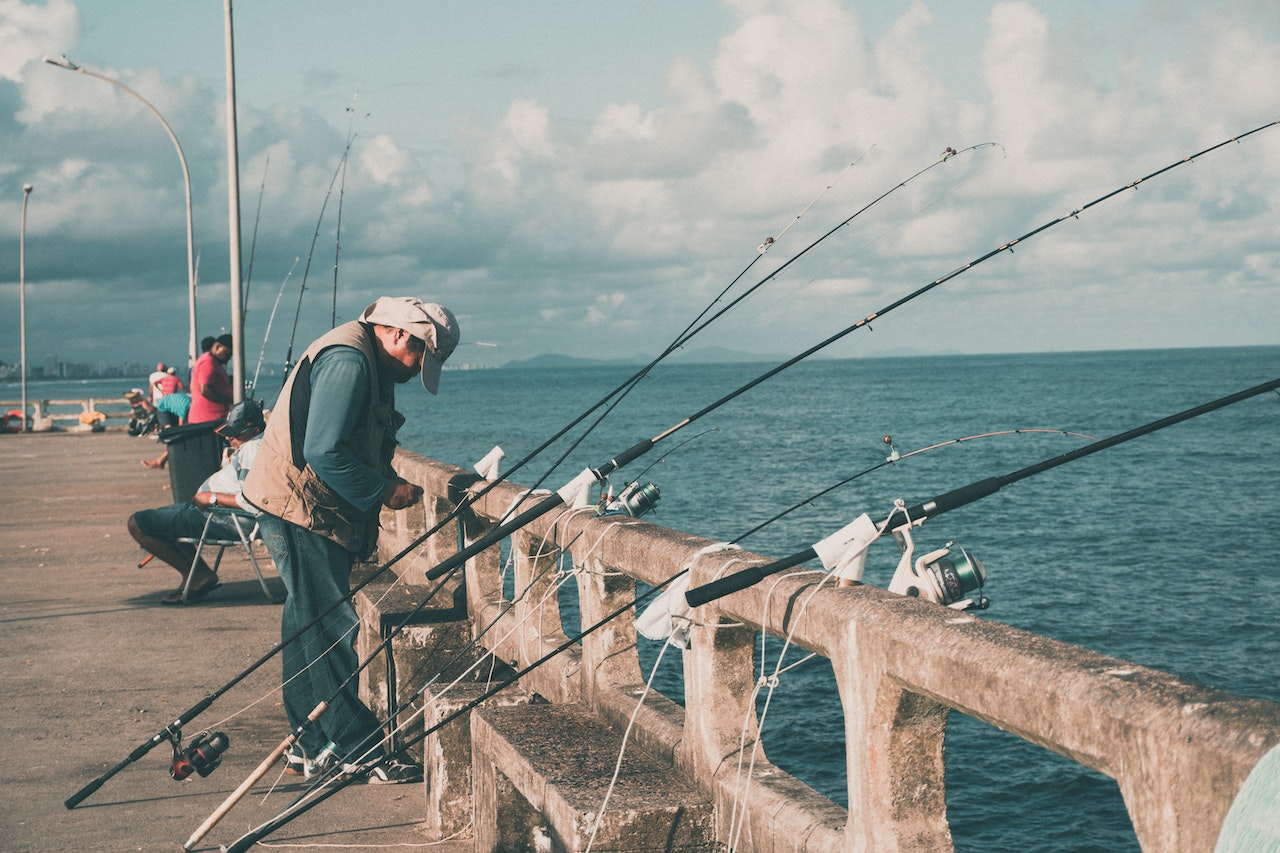
Step 3: Tackle and Lures 101
Next up on your shopping list: tackle and lures. A vast array of bait and lures are designed to entice specific fish in specific conditions. But don’t feel overwhelmed; as a beginner, start with the basics.
Consider kicking off with live bait like worms or PowerBait, a scented substance you can mould around your hook. As you gain confidence, explore lures that mimic small baitfish and attract fish with their lifelike appearance.
Don’t forget these essentials:
- Bobbers: These little floaters signal when a fish bites your lure.
- A net: Opt for a rubber net to handle fish more gently.
- Needle-nose pliers: Essential for retrieving hooks from fish mouths.
- Tackle box: Keep your fishing gear organized and accessible.
Remember, your first purchases are just the beginning. As you gain experience, you’ll fine-tune your gear to match your evolving angling skills.
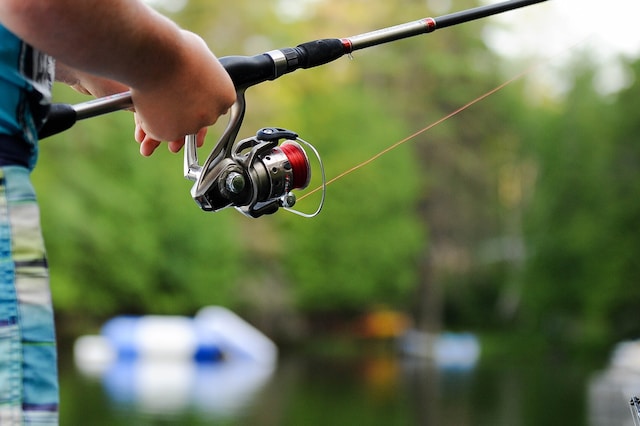
Step 4: Cast Like a Pro and Hook Your First Fish
Your first fishing adventure can be as simple or complex as you desire. Start by casting from a riverbank or a serene lake shore to get familiar with your equipment and the process.
Casting
Casting is a fundamental skill every angler should master. It lets you place your bait or lure close to where the fish lurks. The spinning reel, ideal for beginners, makes casting a breeze. Here’s a quick rundown:
- Leave about six inches of line at the end of your rod.
- Keep the reel below your dominant hand.
- Flip the bail on your spinning reel, securing the line with your finger.
- Raise the rod tip slightly behind you.
- Use your wrist and elbow to cast the rod forward, propelling the lure toward your target.
- Flip the bail back once the lure hits the water and start reeling to attract fish.
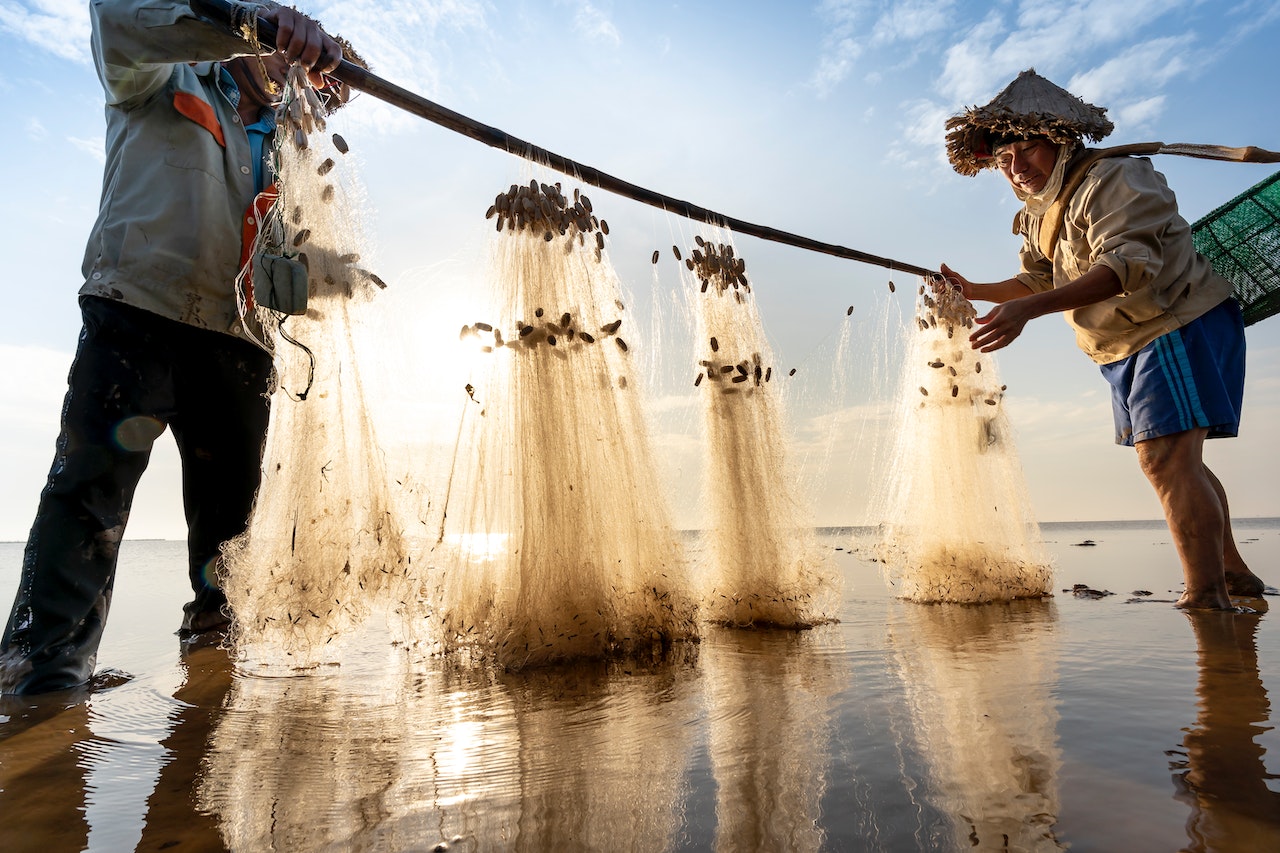
Hooking the Fish
When hooking a fish, two things are essential: preventing the fish from spitting out the lure and keeping your line from snapping. Here are some tips:
- Set the hook properly: Timing and pressure are key. Watch the bobber; quickly lift your rod tip with gentle pressure when it sinks or jerks. This sets the hook in the fish’s lip, not deeper in its mouth.
- Keep your rod tip up: After hooking the fish, let it swim around while keeping your rod tip up. This allows the fish to tire itself out while still on your line. When it’s weary, reel it and scoop it up with your rubber net.
Remember, different fish species vary in strength. By letting the fish tire itself out, you reduce the risk of your line breaking during the battle.
Pro Tips: Keep your line taut, and familiarize yourself with your reel’s specific drag system. Smaller fish are easier to handle with less drag, while larger ones require more resistance.
Step 5: Land Your Catch
If you’ve followed the steps correctly, you’ve set the hook, had a tussle with your fish, and are now closer to the shore. All left is to keep your line taut as you reel it in with your trusty rubber net ready.
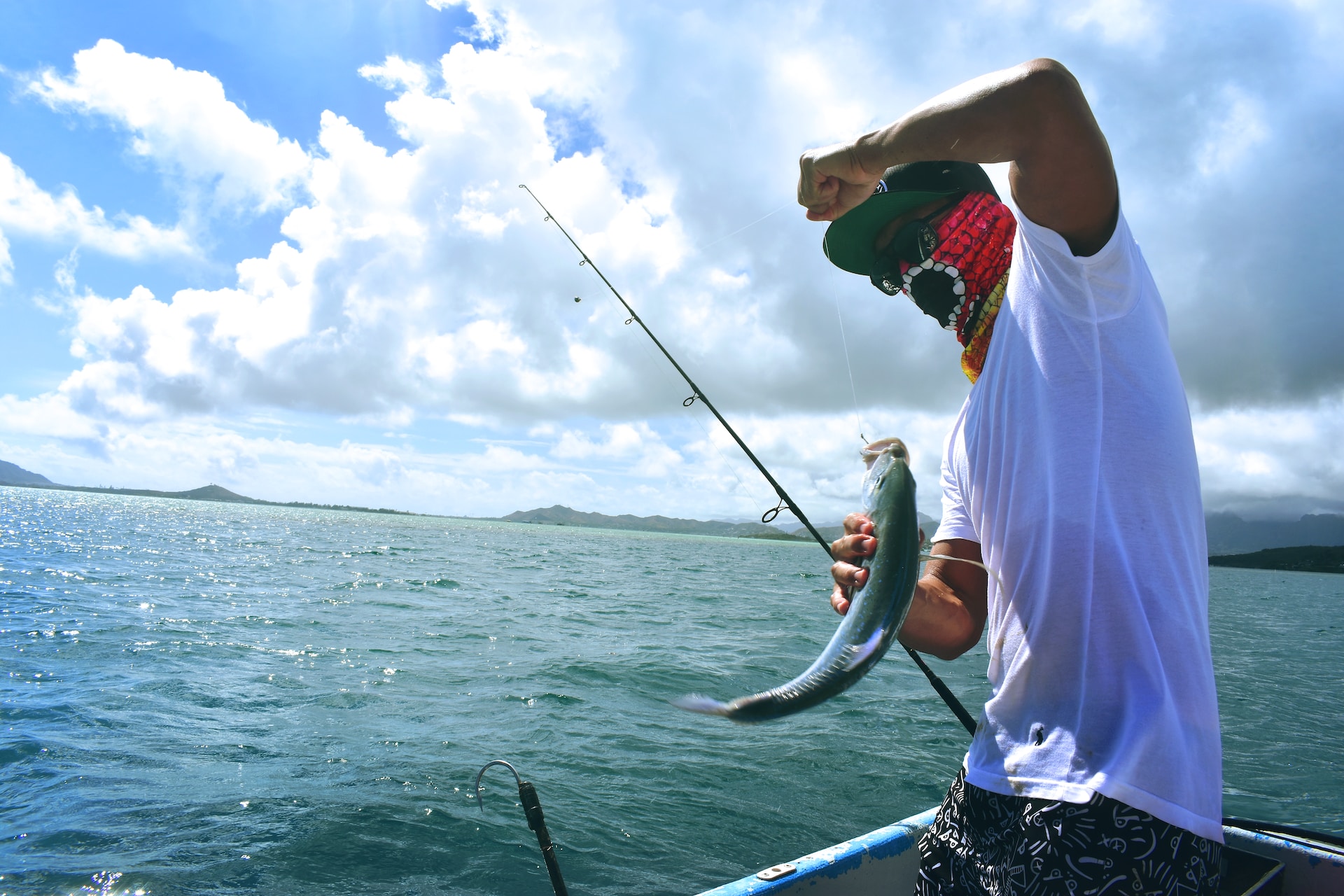
Reaching out to grab the fish is an option, but it’s not recommended. Fish can be slippery and a tad scaly. Use your rubber net to scoop it out and onto the shore. If you plan to catch and release, minimize the time the fish spends out of the water to ensure its well-being.
So there you have it, a beginner’s guide to fishing. Remember, fishing is not just a hobby; it’s a journey of discovery. As you gain experience, your equipment and skills will evolve. So, head out to the water, embrace the serenity, and reel some unforgettable memories. Happy fishing!

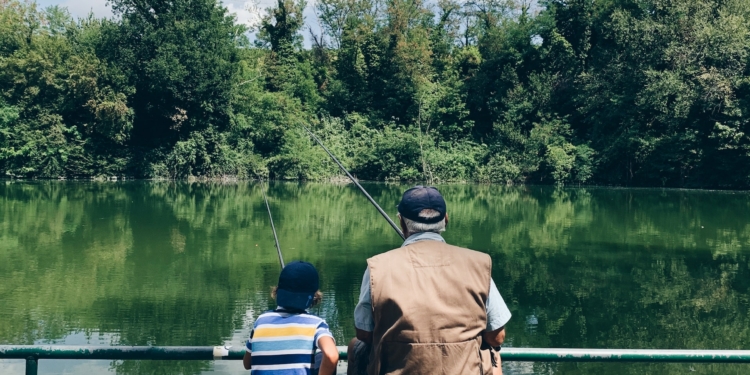
Discussion about this post